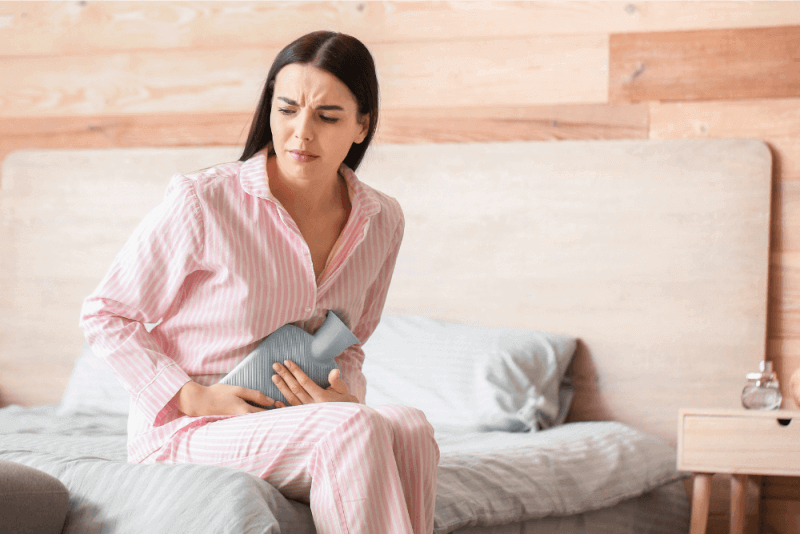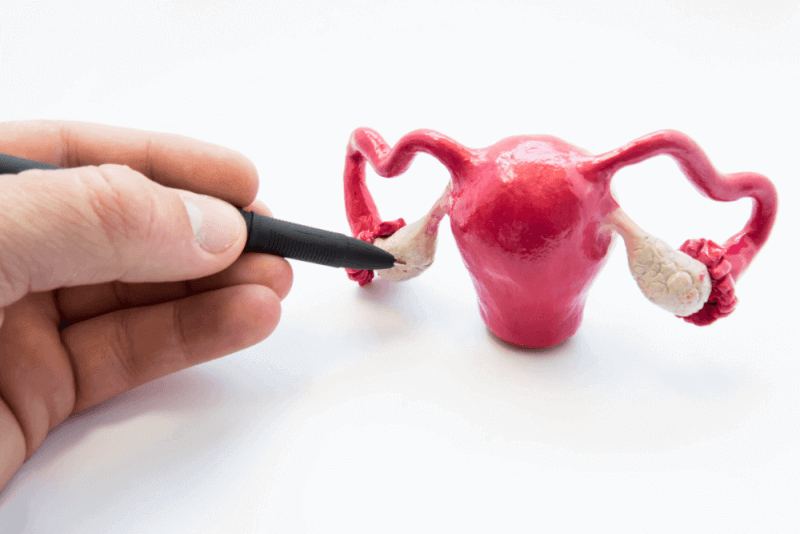What is Dysmenorrhea (Menstrual Cramps)?
Menstrual pain that is severe or moderate during periods and affects about half of women is known as dysmenorrhea. Dysmenorrhea can occur occasionally or during every menstrual cycle. It can be extremely uncomfortable and debilitating, leading some women to avoid going to school or work.
Approximately half of women diagnosed with dysmenorrhea experience primary dysmenorrhea, which typically arises within the first few years of menstruation. Symptoms of dysmenorrhea generally lessen or disappear with age, and in some women, the symptoms may completely vanish after childbirth.
Diagnostic Criteria for Dysmenorrhea (Menstrual Cramps)
A significant portion of women who experience menstrual cramps do not seek medical attention or diagnosis because their discomfort is not extreme. However, when complaints intensify and women visit a doctor, a physical examination is performed, followed by certain tests to confirm the diagnosis.
During the examination, patients are asked about the duration of their pain, menstrual cycle complaints, the age at which they started menstruating, and whether they have been previously diagnosed with endometriosis. The following diagnostic tests may be performed during the physical examination to rule out other conditions and determine the type of dysmenorrhea:
- Pelvic ultrasound
- Pregnancy test
- Cultures for sexually transmitted infections
- Special tests involving the injection of fluid or dye into the uterus
Causes of Dysmenorrhea (Menstrual Cramps)
During the menstrual cycle, the uterus contracts strongly. Intense contractions of the uterus can press against nearby blood vessels, cutting off the oxygen supply to the muscle tissue. When a portion of the muscle briefly loses its oxygen supply, pain is felt. The level of prostaglandins in the uterus decreases as the uterine lining sheds, leading to a reduction in symptoms.
The causes of secondary dysmenorrhea include the following conditions:
- Endometriosis
- Adenomyosis of the uterus
- Fibroids
- Uterine abnormalities
- Ovarian cysts
- Pelvic inflammatory disease
- Crohn's disease
- Urinary disorders
Symptoms of Dysmenorrhea (Menstrual Cramps)
The characteristic symptom of dysmenorrhea is cramping during menstrual periods. Other symptoms that may occur in patients include:
- Throbbing or pain in the lower abdomen
- Pain or discomfort radiating to the legs and thighs
- Constipation
- Diarrhea
- Headache
- Dizziness
- Lower back pain
- Increased urge to urinate
- Nausea
- Vomiting
Treatment Methods for Dysmenorrhea (Menstrual Cramps)
Many women use home remedies to manage menstrual cramps. These methods include:
- Using non-steroidal anti-inflammatory drugs (NSAIDs) to reduce pain and lower the levels of prostaglandins in the body
- Applying a hot water bottle to the lower abdomen
- Taking a hot shower
- Going for a walk
- Practicing yoga
- Meditating
- Getting enough sleep
- Avoiding alcohol
- Quitting smoking
- Consuming Omega-3 fatty acids
When menstrual pain cannot be managed through lifestyle changes or over-the-counter medications, the following medications may be prescribed:
- Birth control pills containing both estrogen and progestin, which help suppress ovulation and reduce the severity of symptoms
- Long-acting reversible contraceptive methods, such as birth control injections and intrauterine devices, along with other hormonal contraception methods
- Other medications that can alleviate symptoms caused by secondary conditions
- Prescription NSAIDs, used alone or in combination with other medications, to reduce pain
In cases where menstrual cramps do not respond to treatment, a minimally invasive procedure called radiofrequency endometrial ablation may be recommended. This procedure aims to relieve intense pain by destroying the nerves that transmit pain signals from the uterus to the brain.
Types of Dysmenorrhea (Menstrual Cramps)
The types of menstrual cramps are divided into two subtypes based on the cause of the cramps:
Primary Dysmenorrhea
Primary dysmenorrhea, also known as primary menstrual cramps, is the type of dysmenorrhea that recurs with every menstrual cycle but is not associated with any underlying medical condition.
In this type, pain begins one or two days before menstruation and is felt as mild to severe pain in the lower abdomen, back, and thighs. Generally, the pain subsides by the second or third day of menstruation. It is the most common type of dysmenorrhea.
Secondary Dysmenorrhea
Secondary dysmenorrhea refers to menstrual pain caused by various medical conditions or infections affecting the reproductive organs. This pain usually begins well before the menstrual period and lasts longer than typical menstrual cramps. Typically, cramps start a few days before the period and continue until bleeding completely stops.
Individuals at Risk for Dysmenorrhea (Menstrual Cramps)
Individuals with the following characteristics are at a higher risk of experiencing menstrual cramps compared to other women:
- Starting menstruation before the age of 12
- Being under 20 years of age
- Having heavy or prolonged menstrual periods lasting more than 7 days
- Smoking
- Genetic predisposition
Complications of Dysmenorrhea (Menstrual Cramps)
Menstrual cramps typically do not cause any complications other than affecting daily life. However, individuals with secondary dysmenorrhea may experience various complications. For example, medical conditions such as pelvic inflammatory disease or endometriosis can lead to infertility or ectopic pregnancy.








